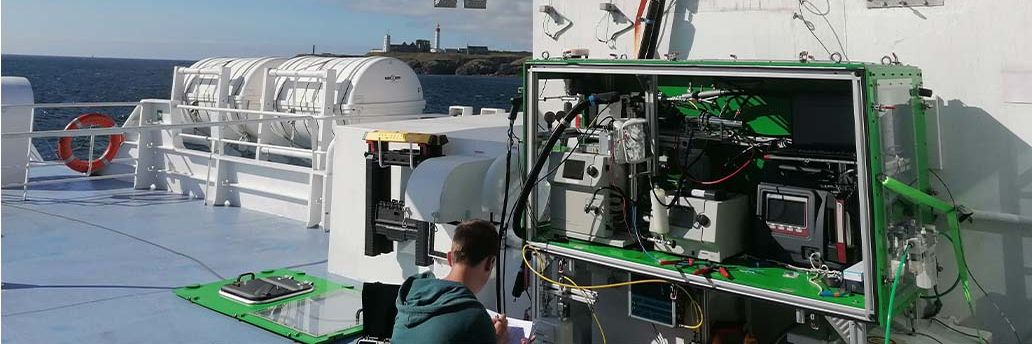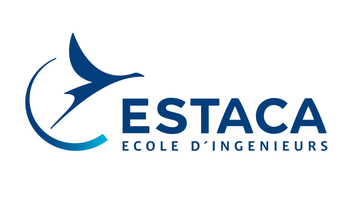News

CAPNAV project: limits polluting emissions from maritime traffic
The CAPNAV project (Characterization of particulate emissions from ships) has come to an end after more than three years of study by ESTACA's air quality research teams. In particular, the project highlights the reductions in fine particle emissions obtained on commercial ships by adopting Liquefied Natural Gas (LNG) propulsion.
Maritime traffic generates pollutant emissions (sulfur oxide, nitrogen oxide and fine particles) which have a major impact on the health of coastal populations. As the maritime sector lags behind in terms of atmospheric emission standards, controlling these emissions is a major environmental and health issue. In order to obtain tangible data on the levels of pollutants generated by the French maritime fleet, an ESTACA research team had been commissioned by ADEME in 2019 to quantify the emissions generated by maritime transport and test different technical solutions to limit pollution. The aim was to gain a better understanding of the nature and concentration levels of particles emitted by two types of engine: one running on marine diesel (MGO), the other on liquefied natural gas (LNG). The second objective was to quantify emissions according to engine operation: underway, maneuvering and dockside. After more than three years of measurements on ships and laboratory studies, this project, known as CAPNAV (Caractérisation des émissions de particules fines des navires), has just delivered its conclusions.
The creation of an on-board instrumentation chain for better understanding of fine particle emissions
The main advantage of the CAPNAV project is that, for the first time, it has developed an on-board measurement chain. Various instruments, initially developed in the laboratory, have been integrated into watertight housings for outdoor use in sometimes extreme conditions. They were taken on board two passenger and freight ships: the Fromveur 2 operated by Penn Ar Bed (marine diesel propulsion), which provides a daily service to the Ponant islands, and the Salamanca operated by Brittany Ferries (LNG propulsion), which operates a weekly service between Cherbourg, Ireland and Spain. Several weeks of on-board measurements in the ships' stacks, synchronized with the recording of ship parameters (speed, engine load), enabled us to quantify particulate emissions, which vary according to whether the ship is maneuvering or sailing. This instrumentation chain, integrated as part of the CAPNAV project, has made it possible to take long samples for physico-chemical analysis, and statistically analyze emissions to produce a map of particulate emission factors. This on-board instrumentation could be used for other studies in the future.
Hybrid propulsion systems to limit emissions in coastal areas and when manoeuvring
Measurements carried out on the Fromveur 2, a vessel powered by marine diesel, first highlighted the much higher emission levels during maneuvers than during navigation. The challenge is to reduce these emission levels close to ports, where local residents live. A diesel additive solution was also tested. However, this only led to a 20% reduction in nitrogen oxide (NOx) emissions under part-load conditions, and had no impact on improving particulate emissions. The data collected as part of the CAPNAV project show that, to limit particulate emissions on this type of vessel, the best scenario is to move towards hybrid marine diesel/electric architectures, so as to be able to use "zero-emission" electric mode during port maneuvering and conventional propulsion at cruising speed.
Liquefied Natural Gas (LNG) propulsion: a solution for reducing fine particle emissions
The second ship studied, the Salamanca, had the advantage of a "dual fuel" engine, and could run on either diesel or liquefied natural gas. This enabled the ESTACA research team to carry out a comparative study of particulate emissions between the two types of fuel. An exploratory study of cabin and deck air quality was also carried out. The results were unequivocal: stack measurements showed a 50-fold reduction in particulate emissions when using LNG compared with marine diesel.
A new project underway to continue measurements
The results obtained by the researchers will be consolidated as part of a new project, EMINAV (Emissions from Vessels), also supported by ADEME, which aims to assess more comprehensively both gaseous and particulate pollutant emissions. Two types of engine will be studied: conventional marine engines powered by marine diesel without pollution control systems, and engines running on liquefied natural gas. Of particular interest is the evaluation of methane slip concentration levels. Methane is a powerful greenhouse gas, and unburnt methane emissions are a weak point in LNG-powered engines.
This project is being carried out in partnership with ITM Atlantique, as well as shipowners Penn Ar Bed and Brittany Ferries, Chantiers de l'Atlantique and ECOGAS.
















No comment
Log in to post comment. Log in.